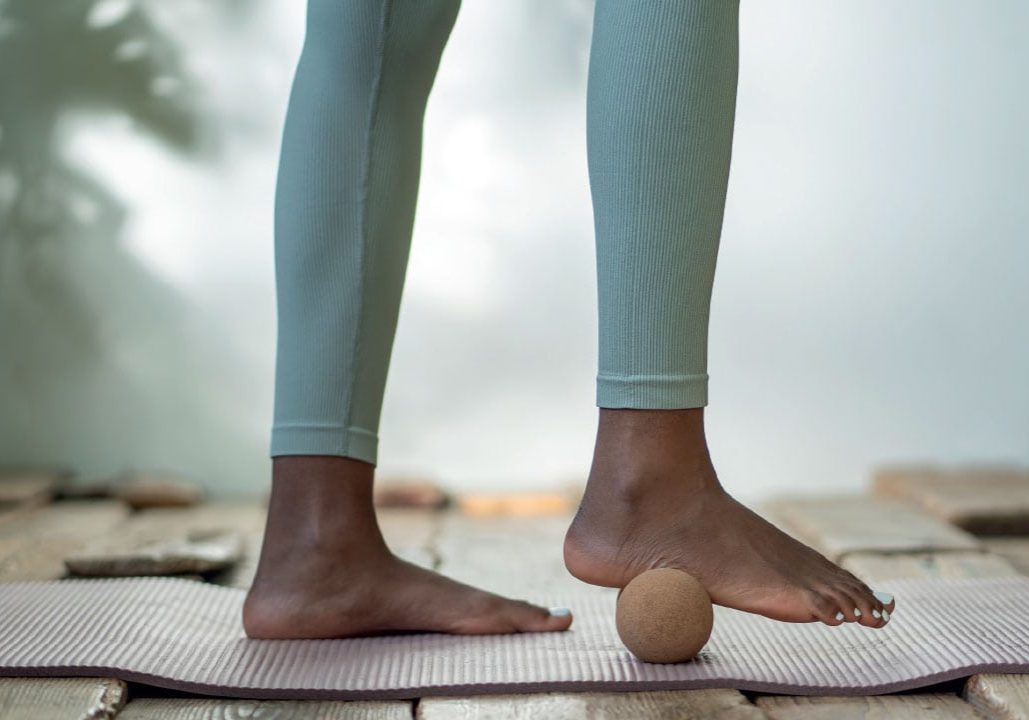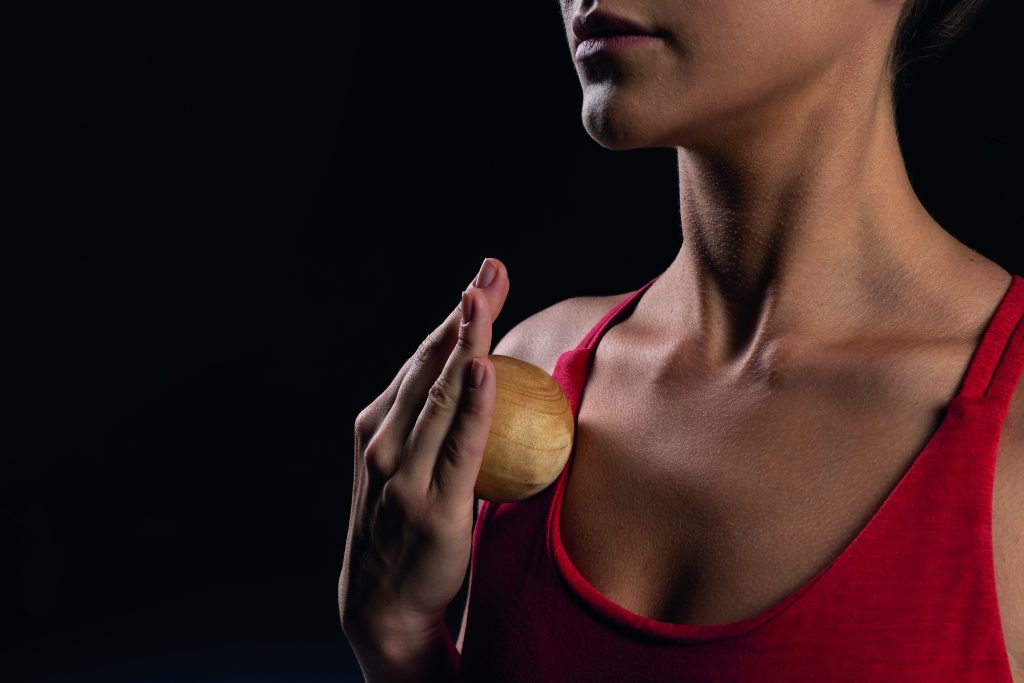
Roll with it
The importance of body rolling in helping your fascia to flourish. By Imogen North
Reading time: 4 minutes
If you’ve ever rolled out your muscles on a tennis ball, lacrosse ball, or any other orb-shaped torture device, you know the sweet mix of discomfort and relief that follows. But what you may not know is that you’re not really working on your muscles at all — you’re working on something far more fascinating: your fascia.
And when it comes to fascia, a little rolling goes a long way toward keeping your body supple, strong, and connected. Here’s a deep dive into why body rolling works, what fascia actually is, and why treating this tissue well is one of the best investments you can make in your mobility, performance, and longterm health.
What is fascia, anyway?
Imagine a 3D spiderweb that wraps every muscle, bone, nerve, and organ in your body. That’s fascia — a continuous, interconnected network of connective tissue that runs from your head to your toes without interruption. It’s strong yet flexible, supportive yet adaptable. In medical school dissections, fascia has often been discarded — literally cut away and thrown in the bin — so for decades its significance was overlooked. But research now paints a different picture: fascia isn’t just structural packaging. It’s a living, sensing, responsive system that influences everything from your range of motion to your immune function.
Fascia isn’t just a passive wrapper. It has four primary functions:
Connection: Links muscles to bones, bones to bones, and organs to their surrounding structures. It’s the framework that holds everything in place while allowing movement.
Protection: Cushions, insulates, encloses, and hydrates tissues while playing a key role in immune defence and injury repair.
Tension distribution: Works like a tensegrity structure (think trampoline): tension in one area affects the whole system.
Sensory organ: Fascia has about 250 million sensory nerve endings — more than any other tissue type in the body. It’s constantly ‘listening’ to mechanical changes like pressure, shear, and vibration, and feeding that information to your nervous system.
Why body rolling works
When you roll on a ball, you’re not ‘breaking up’ fascia — it’s not a stubborn lump of plastic wrap. You’re:
STIMULATING SENSORY RECEPTORS
- Ruffini endings (the specialised sensory receptors) respond to slow, sustained pressure and shearing. This stimulation can activate the parasympathetic nervous system (rest and digest mode), reducing tension and stress.
- Pacini endings respond to vibration and quick changes in pressure, boosting proprioception (body awareness).
- Free nerve endings adapt to different inputs, influencing pain perception and movement patterns.

IMPROVING HYDRATION & LUBRICATION
- Sustained compression and release cycles help move fluid in and out of the ground substance, keeping fascia hydrated and supple.
- Rolling warms tissues, helping hyaluronic acid shift into its fluid state for better glide between layers.
ENCOURAGING TISSUE REMODELLING
- Gentle, repeated loading stimulates fibroblasts to lay down collagen and elastin in a more organised way, improving strength and elasticity.
- It also helps minimise excessive cross-linking of collagen that can stiffen tissues after injury.
ENHANCING NERVOUS SYSTEM COMMUNICATION
- Rich sensory input from rolling fine-tunes proprioception, coordination, and movement efficiency.
- The more clear, precise sensory information your brain receives, the less it defaults to pain signalling.
FASCIA, PAIN, AND THE NERVOUS SYSTEM
One of the most fascinating findings in fascia research is how deeply it’s wired into the autonomic nervous system (ANS). Because fascia is so sensory-rich, poor or reduced proprioceptive input can cause the nervous system to ‘turn up the volume’ on nociception (pain signals).
This is why mindful, slow rolling can reduce pain — it’s essentially fine-tuning the ‘radio signal’ between your body and brain. Instead of static and distortion, you get a clearer, calmer conversation.
THE ROLLING SWEET SPOT
Not all rolling is created equal. Here’s how to make the most of your ball work:
- Go slow. Ruffini endings respond best to sustained pressure and shear — think 30-60 seconds in one area.
- Breathe. Exhaling deeply can help the parasympathetic system engage.
- Stay mindful. Pay attention to sensations, pressure, and subtle changes. Mindless rolling misses the nervous system benefits.
- Aim for ‘hurts so good’, not ‘I’m seeing stars’. Too much pressure can provoke guarding or more inflammation.
- Explore different layers. Superficial fascia near the skin may respond to light, skin-level rolling; deeper fascia may require different positions or props.
BALLS, BALLS, BALLS: YOUR PORTABLE FASCIA GYM
You don’t need a fancy studio or expensive equipment to reap the benefits. A few different-sized balls can give you a full-body fascia tune-up almost anywhere.
Tennis ball: Great for beginners and sensitive areas.
Lacrosse ball: Denser, for deeper work.
Peanut-shaped MFR (myofascial release) balls: Perfect for rolling along the spine without pressing directly on vertebrae.
Small soft inflatable ball: Ideal for abdominal fascia, hips, and gentle shear work.
Think of rolling as brushing your teeth — a daily maintenance habit to keep your fascia healthy, hydrated, and happy.
The bottom line
Body rolling isn’t just about ‘loosening up tight muscles’. It’s a direct conversation with one of your most important sensory and structural systems: your fascia. By stimulating fascia with mindful pressure, movement and breath, you can improve hydration, support healing, reduce pain, enhance mobility and keep your whole-body network functioning as one harmonious, resilient web.
So grab a ball, find a floor, and remember — it’s not just rolling. It’s fascia care. And your body will thank you for every slow, intentional press, melt, and release.
Imogen North is a licensed Yoga Medicine Therapist and has spent the last decade training under her teacher Tiffany Cruikshank. She runs a 250hr yoga teacher training in Harpenden, Hertfordshire. Visit: imogennorthyoga.com or connect on Instagram @imogennorthyoga


